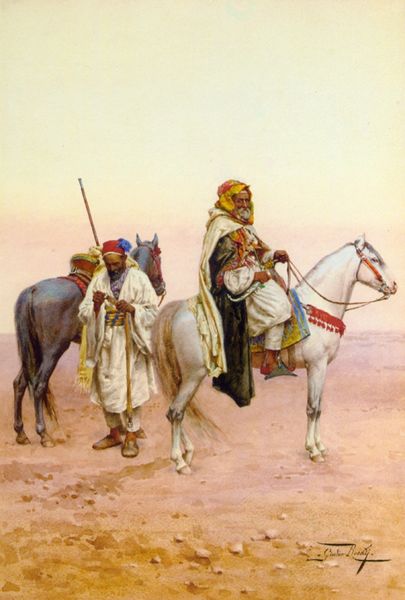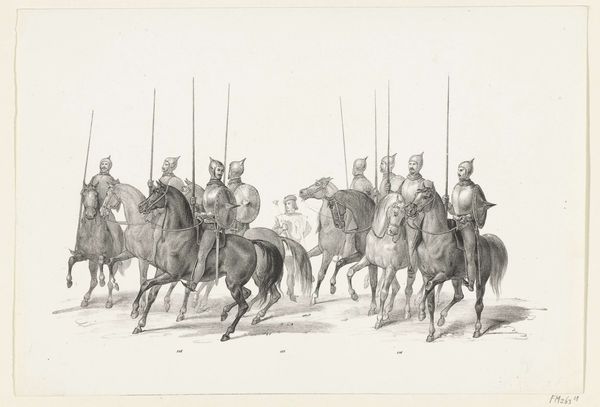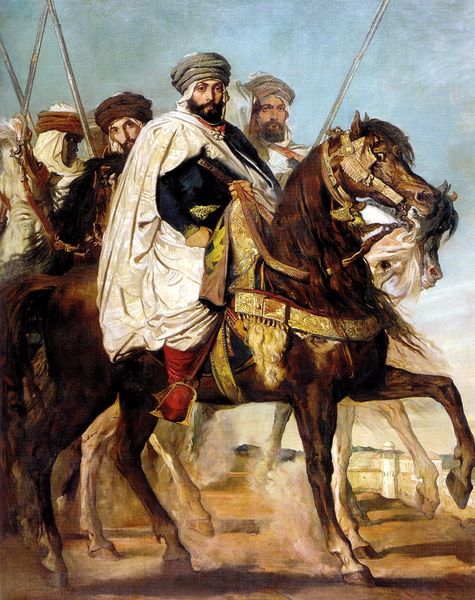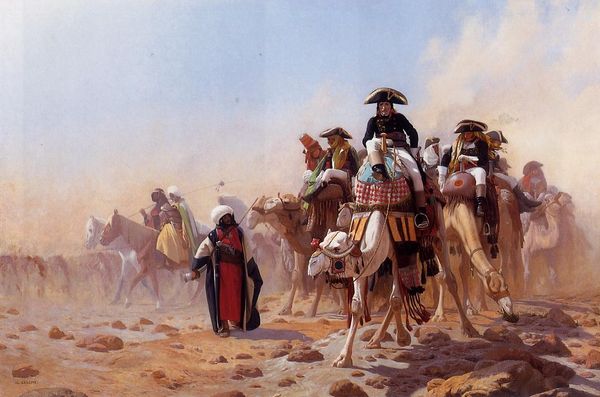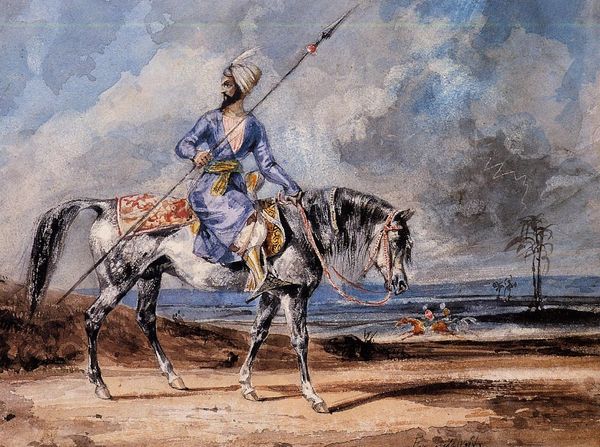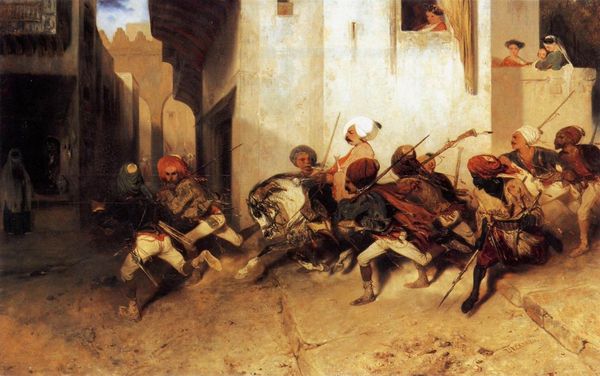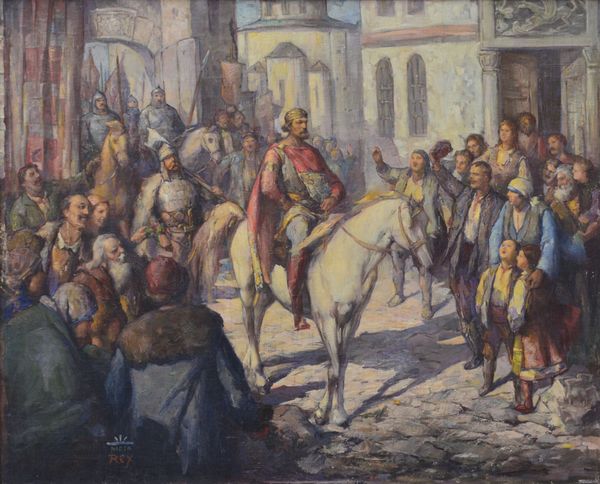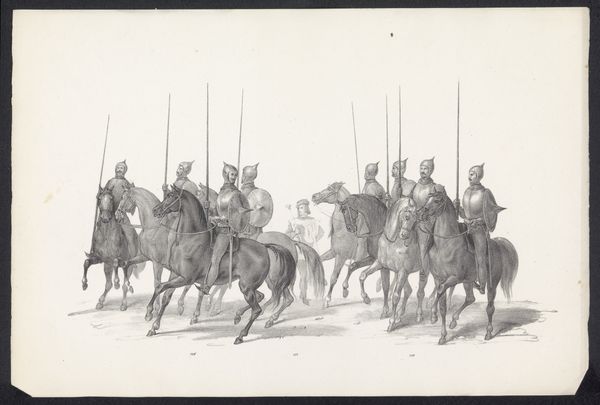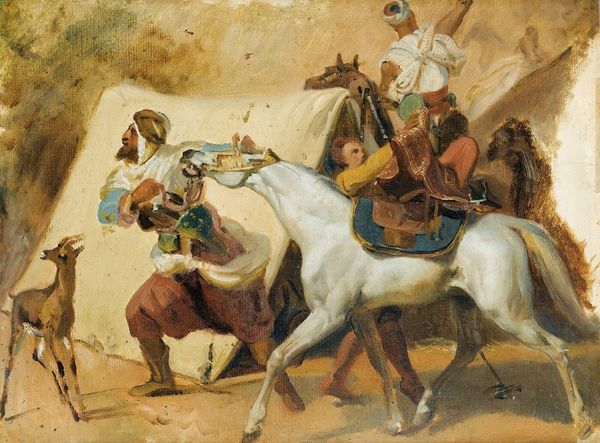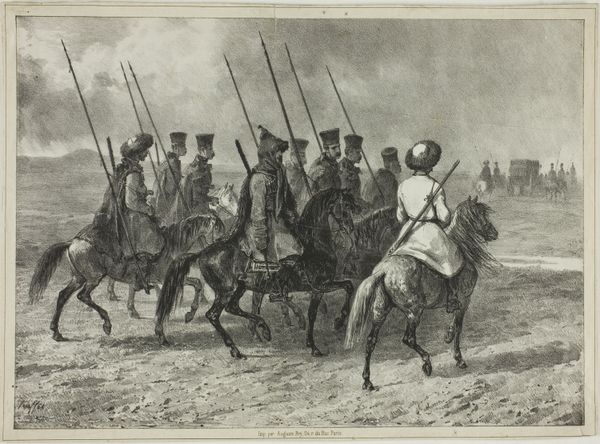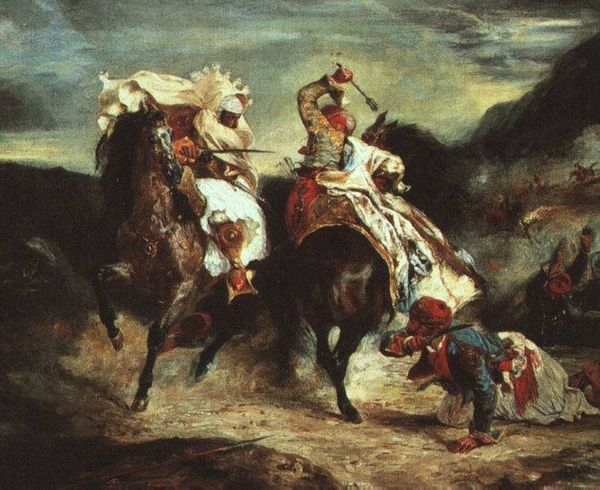
painting, gouache, impasto
#
portrait
#
gouache
#
painting
#
gouache
#
landscape
#
figuration
#
oil painting
#
impasto
#
coloured pencil
#
orientalism
#
horse
#
genre-painting
#
academic-art
Copyright: Public domain
Editor: This is "Camp in the Desert," a gouache painting by Giulio Rosati. The scene is dominated by browns and tans, figures are dotted sparsely around a camp that almost looks like a mirage. It's quite a striking scene, but I wonder, what cultural meanings might we be missing in this representation of a desert camp? Curator: Indeed. Notice how the artist uses symbols familiar to a Western audience. The desert itself, often depicted as barren and unforgiving, carries connotations of both danger and spiritual purification. It can represent the unknown, something untamed by Western culture. Look at how Rosati portrays the figures – are they romanticized? What visual cues suggest this? Editor: I suppose the figures appear somewhat romanticized, perhaps a bit idealized. Their garments seem rich in color, and there’s a certain stoicism in their posture that gives them an almost noble bearing. Curator: Exactly. Rosati is drawing upon, and perhaps reinforcing, the Western fascination with the ‘Orient’ - a land of mystery, adventure and perceived exoticism. This image is less about a specific reality and more about a constructed fantasy that resonated with his audience. What emotions does the piece evoke in you? Editor: Well, despite the seemingly harsh environment, the colors and the figures themselves evoke a sense of admiration, like observing people living freely in harmony with the landscape. Curator: And is that an accurate reflection, or a carefully crafted illusion? Consider how prevalent these Orientalist depictions were, shaping perceptions, potentially fueling a distorted view that masked power dynamics and colonial ambitions. How might that contrast with the symbols and experiences held by those indigenous to the land? Editor: I never really thought about that. It does add a new, somewhat unsettling layer to my perception of the artwork. Seeing it as part of that visual language changes how I engage with it. Curator: And that’s the power of iconography, isn't it? Discovering how images both reflect and construct cultural narratives.
Comments
No comments
Be the first to comment and join the conversation on the ultimate creative platform.
